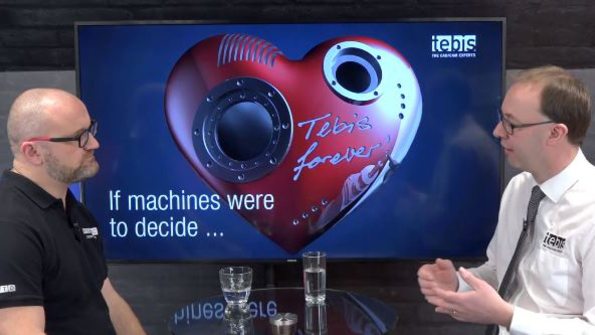Automated Intelligent Manufacturing And Feature Technology With Tebis CAD/CAM
MTDCNC recently invited Paul Scally, Operations Manager from Tebis UK to talk about Tebis automation and the features based technology.
Firstly, why do companies need Tebis automation? Many companies have engineers who are programming in different ways, there is inconsistent quality in the parts or maybe they are not getting the best use out of their CAD/CAM systems and this is where Tebis can help. What we aim to do is to standardise your processes with automation and improve the quality with all the components at the same time.
Feature based technology
Tebis can scan a component and auto-detect all for these features from CAD-geometry. In Tebis there are the libraries with the features and attached to these features are variables. The cutting hole can be ranged, for example, from 5 mm to 8 mm. The software can then automate the machine process with variables, picking up the correct tools for the correct size hole automatically.”
Templates
Paul clearly describes the next topic; Tebis has the technology packages which can help to start with, or Tebis can also send out an engineer who can come and help the user to set-up everything. Tebis will make sure that the software is working in the most efficient manner from the beginning.
Tebis has the technology packages which it can help to start with, or alternatively can end out an engineer who can come and help the user to set up everything. Tebis will make sure that the software is working in the most efficient manner from the beginning.
Moving to the next subject, let me explain how the colour coding works. Tebis can apply different surface finish or tolerance to part colours. When you apply these to CAD geometry with the feature-based technology with standard automation or the whole process automation, the software can actually give the correct surface finish and strategy directly to these objects automatically. Tebis has also built in a filtering system which allows us to link the automation. The system is not just running external plug-ins; it is all built within the software so it will not break if you have new release of the software.
The centralised tool library is the one to start with. This sounds easy, but in reality on certain software we have the tool library on one PC and a tool library on a different PC and maybe these are running out of sync. We have these located on shared server drive, so everybody gets the latest version if something is updated and it’s the same with machine tools, where Tebis has Virtual Machine technology with all the limits built in into the machine. This can be used in the programming environment, so it is not possible to produce a toolpath which is not achievable in reality. All of these things are built up to make very stable and safe processes to protect your business.
Tebis also can store manufacturing knowledge inside the software if a company wants to bring a new engineer on a board, then with the automation it will be a very fast way to get people to program and achieve the same quality in very short period of time. As an example, it is not just the feature-based technology which we talk about in automation, it could be the whole machining process. If we take a look at a video where the car is being machined, then the whole process is completely automated with automated tool direction, but this doesn’t have to be a car, it can be anything.
Finally, I would point out that, in most businesses, standards for cutting tools, speeds and feeds, stopovers are most likely written down and are being used by an engineer on a day to day basis. The Tebis template technology allows all this information to be stored and used efficiently and automatically and has the toolpath still made very quickly to a high quality at the same time.


